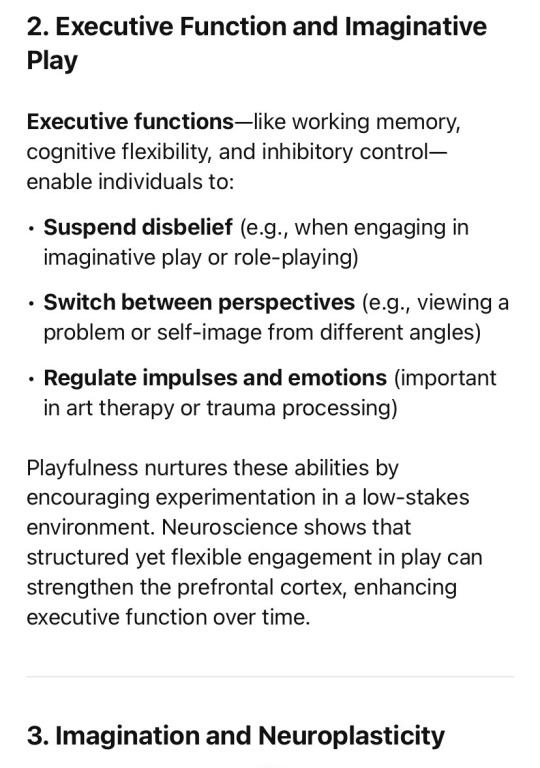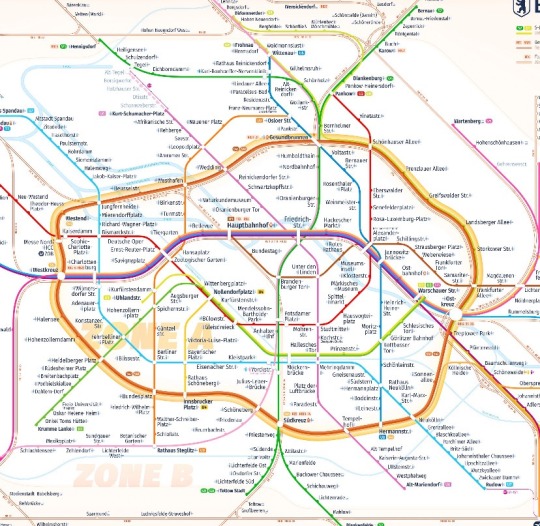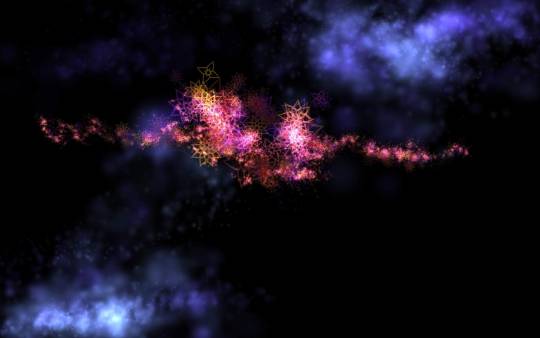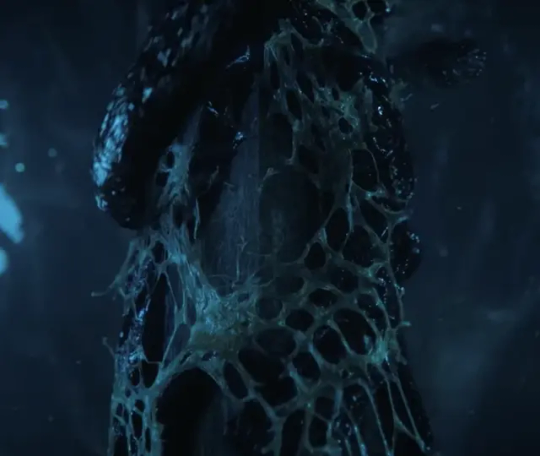#default mode network
Explore tagged Tumblr posts
Text









bundestaadt bunnies
💗 @osgoodschlatterr 💖
Maybe they’re dispositionally bound
to be playfully generated.
Maybe it’s a matter of self- and other- representations of defaulted modes of mind wandering.
all the while saliently aware as if they have control over every externally driven divergent piece of fragmented, and biased consciousness.
Take a bite out of that apple of imagination,
How could you not - you’re in New York.

How much aphantastia is necessary to fall in love?
To live adaptively with no prescribed function.
How do u live with your imagination?
Meaning is made with your construction. What do you like building? A home? A career? A relationship?
You’re doing a great job with what you’ve already built, and it doesn’t look like anyhint I’ve ever seen before.
But that’s the point.
Y - b - mE - when U can - b - ______?
But I’d rather be you in so many ways.
Or at least with you in every way.
Shared individual variance is one of the greatest phenomenological combinations that is relatively possible.
Sharing your light cone in a causally spacious way isn’t enuff tho. I need a timelike causation to proove that love is exclusively the only constructive process that matters.
No other probability is certain aside from my love.
And it’s you =>
its transitionally felt object
The object of my subjection
💗
youtube
#neuroscience#lovestruck#default mode network#self love#otherhearted#bunny#bunnies#berlin#poetry#pablo neruda#il postino#how are you#how are we feeling#how are we doing#best friends#bestfriendcore#iluvnizzy#nizzylove#nizzy#play#playful#playfulness#lover#love quotes#love#i love you#lovers#Youtube
4 notes
·
View notes
Text
Life Is Our Choices and Our Being—Not Our Possessions, Perceptions, or Status
This consumeristic world we live in, increasingly shaped by materialism, social validation, and external achievements, tends to neglect the adamantly clear notion that this period we spend in this material form and that we call life is determined by our choices and inner being rather than mere possessions or status. From the insights of Stoicism and Buddhism to modern neuroscience and…

View On WordPress
#actions#attitude#autonomy#be#being#Buddhism#Buddhist philosophy#choices#courage#default mode network#DMN#dopaminergic circuits#Epictetus#have#justice#Marcus Aurelius#mesolimbic pathway#Neuroscience#perceptions#Philosophy#Psychology#Raffaello Palandri#reputation#social labels#social validation#Stoic philosophy#Stoicism#think#Upādāna#Viktor Frankl
3 notes
·
View notes
Text
This is actually backed up by science!! Your brain contains something dubbed the Default Mode Network, which is responsible for essentially cleanup and maintenance (pulling this info from a neuroscience course I took two years ago so I'm being a bit vague). The thing is, the default mode network can only do this at full capacity if your brain is at rest! Not sleeping specifically, but *wandering*, which is something that people rarely allow themselves to do in a world of constant stimulation and capitalist work ethics drilled into everyone from birth basically. So the pseudo nap lets your brain relax for probably the first time all day, maybe all week! And lets it do some cleanup, some resetting of the furniture of the mind.
Let your mind rest! Not just sleep, rest. It's actually essential for your health and wellbeing, because all this is connected to cortisol levels, which correlate to stress buildup and all the issues that come with it.
My prof assigned us 15 minutes of staring into space for homework at one point. Go do that next time you get the chance
so few people understand the art of the pseudo nap
49K notes
·
View notes
Text
Hypnosis, Hypnotic Trance, and the Default Mode Network.
This is social media, so there will be limitations in what is being presented for brevity.
Do your own reading before coming to any serious conclusions. This post is meant to share things I thought interesting.
I've been doing some reading lately and it seems that hypnosis seems to be related to something called the Default Mode network (DMN), which is responsible for suppressing activity during cognitively demanding tasks.
Even when outside of hypnosis, those who are highly suggestible (highs) have greater connection between right Inferior frontal gyrus (responsible for attention) and the default mode network which suggests a greater ability to dissociate and a higher flexibility in attention. Low suggestibles (lows) typically have greater activity in the parietal lobe (sensory perception and management) and anterior cingulate cortex (responsible for cost-benefit calcuation and conscious decision making and motivation) compared to highs.
This suggests that even outside of a hypnotic state, there are neurological differences in how highs vs lows interpret and process information. It may be easier for those who are naturally suggestible to dissociate from their situation and turn inward to calculate information.
Circling back to the DMN, having a generally increased DMN activity means that the person is currently involved in internally-focused tasks (which may include things like recalling memories, visualizing future events, making social inferences, or other human cognitive tasks). This network consists of multiple specializations and areas including the medial prefrontal cortex (decision making), posterior cingulate cortex (episodic memory and future predictive memory), the precuneus (cue reactivity, gestalt of information, affective response to pain, and eposodic memory), and the lateral parietal cortex (attention, working memory, and spatial and social cognition).
The default mode network is still something that isn't well studied, but is confirmed to be related to things like ADHD, depression, and Alzheimer's. Things like meditation or hypnosis and alcohol consumption can also modulate the Default mode network by changing how related systems interact using external or internal modifiers (alcohol as a depressant, for example).
Sources:
https://youtu.be/YV3QuF-2wdw?si=HgvbwNTSAuTRpvuN
https://www.sciencedirect.com/science/article/abs/pii/S1053811915004668?via%3Dihub
A lot of hypnotic responses aren't conscious. Things like feeling warm, tingly, heavy or light, or relaxed are all byproducts of trance but aren't indicative of trance by themself. However, the relationship between autonomic responses and trance is something that is observed by many tists and subjects alike. Someone who is hypnotized may not show the byproducts above, but if they are, they are- more likely than not- hypnotized. Many people suggest that these feelings (byproducts of trance) happen because even though trance, at least the first time, requires conscious effort.
What I mean is that the person must allow themselves to grow focused and invested in what they are reading or who they are listening to in order to find themself in a trance. Once there it can become a much quicker process. However, most inductions that involve focusing also involve relaxing in some way (see progressive muscle relaxation inductions for the largest example). Relaxation as a byproduct is still fairly common even outside of relaxation inductions. Many subjects will report feeling relaxed after being put into trance.
An argument could be made that the relaxation byproduct is part of the reason that the default mode is activated and may affect someone who is hypnotized to experience other similarly clumped responses- like those mentioned above. Much like how conscious breathing can physically relax and calm someone, going through a hypnotic induction may also be ritualistic, causing autonomic responses to occur, thus giving the typically expected (but not always present) stereotypical responses to being hypnotized.
Part of what makes hypnosis work, according to this thought process, is the active involvement of someone participating in a ritual (a hypnotic induction) without going against what is being asked. The participant does not have to be aware that they are involved in a hypnotic induction, they merely have to be a participant who is able to go along with the directions of what is being asked. As a metaphor, someone could engage in slowing their breathing by no longer involving themself in a stressful situation, naturally calming themself down.
They don’t have to consciously breathe to reset their autonomic nervous system because it automatically takes effect the moment they don't feel stressed anymore. Similarly, in a hypnotic induction, someone doesn’t have to explicitly know that they are engaging in a hypnotic induction. By simply following along with the words being said and being actively engaged in whatever media they are focusing on, they are able to enter at least a light trance since their focus becomes entirely trained on one thing. Once in a light trance, a hypnotist could utilize the naturally greater suggestibility to create a hypnotic trance with far more plasticity and robustness.
Regardless, the point is that by simply following along and becoming focused, a participant can engage their default mode network, dissociate from external stimuli, and focus on a single task, allowing for a trance to emerge. Much like consciously breathing slower to calm the nervous system, simply following along, focusing, and being engaged with something is enough to create a light trance (with greater than usual suggestibility) that can potentially be utilized by someone else.
Informing people you are working with beforehand, discussing limits and expectations before hypnosis occurs, is always the best practice and most ethical form of communication. Fluctual suggestibility could mean that someone is more likely to say yes when they normally wouldn’t. Hypnosis, and suggestibility, can potentially be used to manipulate others, just like any other tool. Use your tools wisely, and always choose what is best for you and those you care about.
0 notes
Text
We're gonna get philosophical today! Mainly because I don't consider myself knowledgeable enough about this paper to speak with any authority.
This paper used fMRI (hey, we talked about that!) to search for Default Mode-Like Networks in bats. The default mode network (DMN) in humans is a sort of background hum in the brain, connections between brain areas that just keep chugging even when nothing particular is happening. Since bats are not humans, they only get a default mode-like network (DMLN). How anthrocentric of us.
The DMN has been associated with stuff like social behavior, internal analysis, predictions of the future, and a bunch of other stuff. Again, I am not super knowledgeable here, so sound off in the notes if you know something I don't. Point is: the DMN seems awfully... human.
So this raises the age-old question of: what's the point of using animals?
When can we use animal models to assume things about human brains? What do we actually learn from doing a brain scan of bats? (I personally just think it's neat, but that doesn't convince many people.)
It's questions like these that you really need to ask, both as a researcher and as a critical consumer of research. In this paper, using bats makes sense because they are highly social, communicative creatures, just like humans. But that doesn't mean a bat is a human, so it's important to avoid over-interpreting. A bat DMLN is almost certainly different than a human DMN (this paper found some heavy auditory system involvement, which is not as prevalent in human studies). This neither negates nor exalts the data we can gather-- it's just an essential step in interpretation said data to formulate future ideas.
Thanks, as always, for tagging along with me!
Washington, S.D., Shattuck, K., Steckel, J., Peremans, H., Jonckers, E., Hinz, R., Venneman, T., Van den Berg, M., Van Ruijssevelt, L., Verellen, T., Pritchett, D.L., Scholliers, J., Liang, S., Wang, P.C., Verhoye, M., Esser, K.H., Van der Linden, A., & Keliris, G.A. (2024). Auditory cortical regions show resting-state functional connectivity with the default mode-like network in echolocating bats. PNAS 121(27): e2306029121.
#neuroscience#bats#functional magnetic resonance imaging#fmri#default mode network#dmn#biology#science communication#reading neuroscience#science#scientific literature#oooh let's get philosophical!!
1 note
·
View note
Text
3.2 Part Four: What shape is your practice?
What shape is my practice? Well, there’s a question! After some thought, I’m going to suggest that the shape of my practice is a function of the connections in my brain that the idea of it sets up. But what does it mean, literally and at a more intrinsic level? What does it want to know about itself or ask other parts of my brain about? And now I’m going to shift gear and refer to mind rather…

View On WordPress
0 notes
Text
ough i dont want to work. i want to read research studies about dreams and daydream about video games...
#kcat talks#remind me to read the linked studies in this https://www.nature.com/articles/npp20146 later#its an inch resting study about cerebral fluid differences in high- and low- dream recallers#in the medial prefrontal cortex and uhhhh temporal parietal junction iirc#the tpj is also relevent in attention direction so they mention that high dream recallers may be more prone to waking more at night#bc of the higher activity in the tpj leading them to draw more attention to external stimuli ^^ which at least makes sense for me personally#need to look more at the default mode network in general too it's a cool thing. not just for dreams but mind wandering too#have a neuroscientific theory of dreaming book i need to get back to reading...#also did you know people on reddit are talking about weird toilet labyrinth dreams. apparently thats a common dream to have#ive had those once or twice like a giant gymnasium of toilets or twisting hallways with weird bathroom arrangements#but forgot about them until i saw the threads on them#need more fucked up liminal spaces in my dreams those are fun
1 note
·
View note
Text
Problem-Solving and Decision-Making: A Process-Driven Approach to Mastery
Since when I was a kid, think 5 years old, I discovered that I excelled in both problem-solving and decision-making. Later in life, I became aware that they also are fundamental to our human experience, shaping our lives, careers, and relationships. Photo by Andrea Piacquadio on Pexels.com They are often seen as skills one either possesses or lacks. However, a process-driven perspective reveals…

View On WordPress
#2-Minute Rule#5 Whys#anterior cingulate cortex#awareness#bias#Buddhism#buddhist wisdom#Continuous Improvement#convergent thinking#creative thinking#decision matrix#decision-making#default mode network#Dichotomy of Control#divergent thinking#DMN#Dopamine#dopaminergic system#Growth#hippocampus#insight#learning#logical analysis#logos#Madhyamaka#Middle Way#Neuroscience#non-attachment#prefrontal cortex#premeditatio malorum
2 notes
·
View notes
Text
Hey btw if you wanna mess with people, you totally shouldn't go into one of the big three browsers (Chrome, Firefox, or edge) and type into the address bar 192.168.1.1, put a wifi username and password in, then start absolutely fucking with it by lowering the amount of allowed users to 2 at a time or logging users out every 10 minutes or blocking URLs or--
#sincerely#your tech nerd that should not have become a tech nerd#because man is it easy to fuck with people when I can access their WiFi and computers#toby rambles#make sure to password lock all your devices and have a short timer before sleep mode kids#this totally isnt a default gateway that I was trained to use if I'm configuring a corporate wifi network#and this totally doesn't work for personal area networks (home wifi)#have fun :)
1 note
·
View note
Text
a 6’2 neuroscience major asked me out. he told me i remind him of the brain’s default mode network, “quiet, intricate, always active” now i can’t stop thinking about him
622 notes
·
View notes
Text
‧₊˚ The Science Behind @luckykiwiii101's Distraction Technique *ೃ༄



Relaxing °. *࿐
Relaxation techniques are more effective when the body is at ease. A comfortable position minimizes physical distractions and prepares the body for a shift into a relaxed, meditative state, which is essential for reducing stress and activating the parasympathetic nervous system.
The Alpha State °. *࿐
Alpha Brainwaves: The alpha state refers to a brainwave frequency range (8-12 Hz) that is associated with relaxation, creativity, and heightened suggestibility. Alpha is a common state for the brain and occurs whenever a person is alert, but not actively processing information. You can increase alpha by closing your eyes or deep breathing and decrease alpha by thinking or calculating. ଳ Sub band low alpha: 8-10: inner-awareness of self, mind/body integration, balance ଳ Sub band high alpha: 10-12: centering, healing, mind/body connection
Counting and Visualization: Counting down and visualizing numbers can help quiet the mind, reduce external distractions, and induce relaxation. This repetitive task shifts attention inward and promotes alpha wave activity. It activates areas of the brain linked to visualization, like the occipital and parietal lobes. Adding another layer of mental activity, further grounding you in the internal, relaxed state.
Distraction Through Visualization °. *࿐
Distraction vs. Focus: The paradox here is that by intentionally distracting yourself with a scene or an internal activity (like playing a song mentally), you stop focusing on the external world (the "3D"). This detachment from external stimuli is key to shifting into an altered state of consciousness.
Default Mode Network (DMN): When you visualize or let your mind wander, the DMN, a network of brain regions activated during rest and self-referential thought, becomes active. This helps in decoupling from immediate sensory input and encourages a meditative or void-like state.
Letting Go: The act of distraction prevents overthinking about reaching the void, which can be counterproductive. When you're engrossed in a scene or mental song, you're no longer "trying," which facilitates a natural shift into the void.
Induce Pure Consciousness °. *࿐
Guaranteed Results: The process relies on reducing external focus and internal resistance. The void state is associated with a deeply relaxed state of consciousness, where mental barriers (ego) dissolves. This does not mean it's a deep meditative state, it's just "pure consciousness" as its name suggests.
Neuroscientific Basis °. *࿐
Relaxation Response: Inducing the alpha state triggers the relaxation response, reducing stress hormones (like cortisol) and increasing focus.
Cognitive Load Diversion: By distracting the conscious mind with visualization or mental activities, the subconscious becomes more accessible.
Hypnagogic State: The method resembles techniques used to enter the hypnagogic state, a transitional phase between wakefulness and sleep, where visualization and suggestion are potent.



#empyrealoasis#law of assumption#loa#void state#pure consciousness#master manifestor#manifest#reality shifting#shifting#shiftblr#voidblr#void#4d reality#desired reality#anti shifters dni#affirm and persist#robotic affirming#manifestation#law of manifestation
1K notes
·
View notes
Text
Music Helps Manifestation And Shifting — Scientifically Proven
Excuse me, where are my manners? Hello, my darling. I hope you’re doing well today, be sure to stay hydrated and well rested, now buckle up for this.
We all know music moves us. It can shift a mood instantly, bring you to tears violently, make your skin erupt in chills, or trigger memories from a decade ago like they happened five minutes back. But what if it could do more than influence your emotions?
What if it could bend reality with you?
What if music is more than entertainment, what if it’s an engine for manifestation and shifting?
Here’s the truth:
Music alters the brain. It shifts the nervous system. It affects brainwave states. It primes the subconscious.
And in the world of Law of Assumption, Law of Attraction, quantum creation, and dimension shifting, that means it can change your state, which means it can change your world.
Let’s break it down, shall we?
Studies in neuroscience show that music has an immediate and profound effect on:
• The limbic system – the emotional center of your brain
• The default mode network (DMN) – your resting state brain, where imagination, introspection, and visualization live
• The prefrontal cortex – the area responsible for self-awareness and intention
• Dopamine release – associated with motivation, pleasure, reward
• Brainwave entrainment – syncing your brainwaves to match a rhythm or frequency (yes, binaural beats fall under this)
Researchers at Stanford literally found that music “engages areas of the brain involved with paying attention, making predictions and updating events in memory.” Translation? Music hijacks your brain’s attention system and makes you more suggestible.
This is a fucking goldmine.
Because if assumption creates reality, and music creates altered states where assumptions are more deeply absorbed, then music becomes a backdoor to the subconscious, the very gateway of your 4D reality.
When you listen to a song, you’re not just hearing sound—you’re aligning with a frequency. Not just in Hz, but in emotional signature. The emotions a song evokes (longing, power, seduction, success, peace, grief) all have vibrational blueprints.
This is why music can teleport you to an entirely different headspace, even if your environment hasn’t changed.
That change in emotional frequency is actually a change in energetic alignment, which means you’re changing your magnetic field, your assumptive state, and your point of attraction.
For example:
A dreamy, ambient track may bring you into a calm, lucid state where visualization becomes effortless.
A sultry, hypnotic song may help you embody your most confident, magnetic self—perfect for self-concept and SP manifestation.
An orchestral cinematic piece might help you assume your main character energy, becoming the star of your own storyline.
If states create circumstances, and music alters state…
Then music is one of the most direct ways to embody a version of you that already has what you want.
In the shifting community, people have long known the power of music as a shifting aid. Whether it’s shifting to DR or simply a different state of mind, music provides:
• Stability of focus (keeps your mind from wandering)
• Sensory immersion (you start to feel like you’re there)
• Emotional fuel (you believe the state you’re entering because the sound makes it feel real)
Many use specific shifting playlists as triggers, and there’s a reason.
The brain starts associating certain songs with alternate realities. You’re creating neural anchors. You’re telling your brain: “When I hear this, I am there.”
Eventually, a few seconds into the track and your state begins to shift automatically—even before affirmations, visualizations, or techniques.
The music becomes the technique.
Your subconscious responds best to emotion, repetition, imagery, and rhythm.
Which means: songs are like affirmations on steroids, because they come with a melody your brain can loop endlessly.
This is why you might hear a lyric and feel like it’s “speaking your manifestation into existence.” That’s not placebo, that’s subconscious absorption in real time.
And when you choose music that already expresses your desired state—love, wealth, power, peace—and you move, affirm, or visualize with it…
You are literally rewriting your internal program.
Now, my love. Let’s go from theory to actual practice.
Here are different methods to use music to deliberately reinforce your manifestations and shift reality:
1. Create “State Playlists”
Make separate playlists for you.
• Dream self.
• Rich self.
• Magnetic self.
• Healed self.
• DR self.
Label them accordingly. Use each one only when entering that state, to strengthen the neural/energetic link. You may not even need to MAKE playlists, given there’s plenty of self-concept and manifestation ones existing on Spotify.
Bonus if you include songs specifically related to or based off manifestation, but it can be anything. I literally use Hamilton, the musical. Yes. I manifest with a Founding Father.
2. Use Music Before or During Visualization
Right before bed, or during SATS (State Akin to Sleep), use music that feels like the version of you you’re stepping into.
Close your eyes. Let the music take over. See it. Feel it. Let the sound wrap around your new self-concept.
This turns your visualization into an embodied cinematic experience.
3. Dance It In
Movement + music = rapid state change.
You are letting your body become the state.
Feel rich, powerful, chosen, or transcendent and let that flow through you while the music plays.
Move like the version of you who already has it.
4. Loop Audio Affirmations Over Instrumentals
Create your own tracks: layer affirmations or visual scene descriptions over a song or instrumental that matches the vibe of what you’re manifesting.
You’re creating a subconscious feedback loop of belief, sound, and imagery.
Yes, this works for subliminals that have music. Good luck finding a good one, though…
Let’s change the topic! In quantum terms, all versions of you already exist.
You — rich.
You — in love.
You — in your DR.
And if states are portals, then music is a powerful anchor into the vibration of a chosen timeline.
What does that mean?
It means you can use music to select the version of you you want to embody, over and over, until it becomes stable and natural.
You stop waiting for proof, and start vibing as proof.
You’re not manifesting blindly anymore,
you’re aligning, deliberately, sonically, emotionally, and somatically.
And let’s not forget:
In nearly every spiritual tradition, creation begins with sound.
• “In the beginning was the Word…”
• Om, the universal vibration in Hinduism.
• Sound as sacred geometry.
• Frequency as the structure of matter.
Your reality is built by vibration.
And music?
It’s one of the purest forms of vibration we can consciously engage with.
When you realize that you are God, the operant power, and you use music not just to entertain, but to create,
You step into reality creation as art.
#law of assumption#loa success#loablr#loassblog#loassblr#loassumption#manifesting#master manifestor#shiftblr#shifting blog#affirming loa#loa tumblr#loa blog#shifting motivation#shiftingrealities#shifting consciousness#shifting memes#shifting community#reality shifting#neville goddard
601 notes
·
View notes
Text
will shifting ever be scientifically proven? a nerdy investigation. . .
reality shifting exists in a weird twilight zone between mysticism and science. on one hand, shifters claim full sensory experiences in different realities, describing their DRs as just as real—if not more real—than this one. on the other, skeptics dismiss it as intense imagination, an extension of lucid dreaming or dissociation at best.
so, will shifting ever be scientifically proven? will we one day have brain scans, peer-reviewed studies, and neuroscientific validation backing it up? or will it remain in the same category as astral projection and past-life regression—forever debated, never confirmed?
guys, this isn’t just a yes-or-no question. it’s a deep dive into how science deals with the unknown, how history has repeatedly proven skeptics wrong, and whether shifting might be next!!!
what science currently says: shifting vs. similar phenomena
while shifting itself hasn’t been studied in depth (yet), we do have research on similar states of consciousness—lucid dreaming, hypnosis, and even maladaptive daydreaming (to an extent). so, what does science say about these?
1. lucid dreaming: once called “impossible,” now neurologically proven
not too long ago, lucid dreaming was considered pseudoscience. the idea that someone could be conscious while dreaming sounded absurd—until researchers found a way to prove it.
scientists like stephen laberge used fMRI scans and eye movement signals from sleeping participants to confirm that lucid dreamers were indeed aware and controlling their dreams. we now know that lucid dreaming involves a unique interplay between the prefrontal cortex (responsible for self-awareness and decision-making) and the REM sleep stage.
before this research? lucid dreamers were written off as liars, delusional, or mistaking their dreams for something they weren’t. sound familiar?
2. hypnosis: once dismissed, now widely used in medicine
hypnosis was once labeled as stage magic and a party trick. today, it’s an accepted psychological phenomenon used in therapy, pain management, and even surgery (yes, surgery—some patients have undergone operations using only hypnosis as anesthesia).
neuroscientific studies show that hypnosis alters brain activity, shifting people into a highly focused state where the brain processes suggestions as reality. if science could accept that the mind can be influenced to perceive reality differently, why is shifting such a stretch?
3. maladaptive daydreaming: a new but recognized condition
maladaptive daydreaming wasn’t officially named until 2002, when professor eli somer identified it as a distinct phenomenon. before then, people struggling with excessive, immersive daydreaming were misdiagnosed with ADHD, OCD, or dissociative disorders.
now, we have concrete research proving that MD is neurologically distinct from normal imagination, linked to overactivity in the default mode network (DMN)—the brain’s self-referential system.
again, before science caught up, these people were called lazy, unfocused, or simply too imaginative. now? it’s a legitimate condition with ongoing research.
what can we take away from that? well, this formula, probably:
history repeats itself: the cycle of disbelief → proof → acceptance
science has a history of mocking what it doesn’t yet understand. let’s not forget that:
• germ theory was laughed at—until microscopes proved bacteria existed.
• deep-sea creatures? dismissed as sailor myths—until we developed better submersibles.
• lucid dreaming, hypnosis, and MD—all called “fake”, until research proved otherwise.
what does this tell us? if shifting is real, the fact that it hasn’t been proven yet doesn’t mean it won’t be. it just means science hasn’t caught up.
but, i like being thorough & unbiased, so i’ll list a few reasons i think or don’t think it’ll be proven!
reasons shifting might be proven
1. brain scans might reveal shifting-specific activity.
• fMRI studies could eventually show unique neurological patterns in shifting states, differentiating it from dreaming or imagination.
2. science is moving towards studying altered consciousness.
• lucid dreaming, astral projection, and out-of-body experiences are getting more attention in neuroscience. shifting could be next.
3. quantum theories suggest consciousness may not be confined to the brain.
• theories like the many-worlds interpretation propose infinite parallel realities—if true, shifting might be tapping into that.
4. hypnosis proves perception can be altered at a deep level.
• shifting might be a self-induced state where the brain accepts a different reality as real.
5. historical precedent shows that dismissed phenomena often get validated later.
reasons shifting might never be proven
1. there’s no scientific method to test it yet.
• unlike lucid dreaming (where we can confirm awareness inside dreams), there’s no current way to measure or prove someone is in a DR.
2. it relies on subjective experience.
• shifting is deeply personal—there’s no external way to prove someone’s consciousness is in another reality.
3. science still struggles to define consciousness itself.
• if we don’t fully understand what consciousness is, proving it can move between realities is even harder.
4. there’s no physical evidence of DRs existing.
• unless we discover parallel realities and a way to interact with them, shifting might remain in the realm of belief rather than science.
5. mainstream science is slow to accept unconventional ideas.
• even if shifting is real, it could take decades—or even centuries—for science to acknowledge it.
my verdict: will shifting ever be proven?
it depends on what shifting actually is.
• if shifting is a genuine form of multiversal travel, it might take quantum physics advancing far beyond what we currently know to validate it.
• if shifting is a unique altered state of consciousness, neuroscience might eventually find evidence through brain imaging studies.
• if shifting is something else entirely—something we don’t even have a framework for yet—it might never be proven in our lifetime.
but history has shown that just because science hasn’t proven something yet doesn’t mean it won’t. skepticism is often just delayed understanding.
so, will shifting be scientifically proven? not tomorrow, not next year—but if history has taught us anything, it’s that the impossible has a habit of becoming reality.
and when that day comes, best believe we’ll be the ones saying “told you so.”
#shifting#reality shifting#shiftblr#shifting community#loassumption#shifting tips#shifting antis dni#shifting script#law of assumption
317 notes
·
View notes
Text
The power of sensory immersion for shifting
1) Why is sensory immersion so powerful?
Your brain doesn't really distinguish between an imagined and a real sensory experience
When you engage your senses (sight, sound, touch, smell...), you create .almost real signals.
This activates deep neural networks of immersion and facilitates letting go.
-> Sensory immersion helps to blur the line between CR and DR.

2) Do NOT force visualization
-> "I can't visualize" -> It's not a problem
Many shifters have noticed:
The more you FORCE the images, the more the analytical mind stays active.
The goal: let the sensations come naturally.
You don't need to perfectly "see" everything. You can:
- Feel-> Emotions, sensations.
- Hear -> Sounds from your DR.
- Imagine textures-> Your DR bed.
- Create ambiances.
3) Sensory profiles are different
We don't all have the same dominant sense. Find your strength:
- Olfactory : Imagined smells (perfume, rain, food)
- Auditory : Music from your DR, background sounds (cafes, forest, city, rain…)
- Visual: Blurred decors, dominant colors, symbols, your DR room
- Tactile: Skin sensations (wind, sheets, fabrics…)
- Gustatory: Taste of what you eat there
-> Identify which senses are easiest to invoke for you. Start with them.

For example, you can listen to this ambient sound if you shift to Hogwarts.
4) Scientific help, the role of the Default Mode Network
Your brain has a network that calms down when you immerse yourself sensorially.
This reduces internal dialogue and the "critical mind" that often blocks you.
-> The less your mind analyzes, the more your unconscious takes over, and ego identification decreases.

5) How to let images and sounds come without forcing
1) Breathe slowly .
2) Allow yourself to be blurry.
3) Start with small simple scenes.
4) Observe rather than actively create.
5) Don't look for "perfection", just try to "feel".
-> The more you let go, the more details come by themselves.

You can do a short meditation beforehand to relax and help you be in the present moment.
6) The importance of ASC (Altered States of Consciousness)
Immersion is facilitated in ASC (hypnagogic state, deep relaxation, light trance, it's not mandatory but seems to make things easier).
You can:
- Practice before sleep.
-Do gentle meditation .
- Use appropriate binaural sounds .
-> The altered state allows the analytical mind to disconnect and facilitates fusion with your DR.

Just after meditation you can put a subliminal or alpha waves for example


Julia method link
There are even subliminals that mix theta wave, affirmations and Sound atmosphere.
7) Practical examples according to your profile and what you prefer
- Auditory: Playlist of your DR during preparation
- Visual: Very simple scenes (just a dominant color at first, then an object where you are, and a room if you can)
- Tactile: Feel the sheet of your DR bed, the warmth of the sun, the texture of your DR pajamas
- Gustatory: Imagine tasting your DR breakfast
- Emotional: Feel the emotions you will have in your DR
-> The more you rely on YOUR strong channel, the more stable immersion becomes.


Examples of what people who shift on command can use
8) Do not try to control when the shift happens
-> Sensory immersion is a springboard.
The shift often triggers when you are immersed without trying to control the moment.
- Have fun "visiting" before "leaving."
- Release tension about the result.
- Obsession with the result blocks(Or at least decrease the chances); curiosity opens.

Even if you have trouble visualizing, you can rely on other things or your other senses.
9) What we learn from those who shift on command
Many report that this kind of non-forced immersion is key.
It's a balance:
->Sensory engagement + letting go = smoother shift.
Conclusion :Sensory immersion: a powerful tool, accessible to all.
No matter your profile.
You don't need to "visualize perfectly" .
You only need to play with your senses, let the experience build gently.
Remember: your brain is made for this.
youtube
#fulfillment#shifting#reality shifting#reality shifting community#self concept#shifting methods#shiftinconsciousness#shifting help#desired reality#dr self#shifters#shifting reality#kpop shifting#shifting motivation#shifting stories#anti shifters dni#black shifters#marvel shifting#reality shifter#shiftblr#shifting advice#shifting antis dni#shifting blog#shifting community#shifting consciousness#shifting diary#shifting memes#shifting realities#shifting script#shifting success
194 notes
·
View notes
Text
I attended a series of lectures on neuroscience these last few days (well, they were a super basic cliffnotes-esque version of the topic cause medicine/STEM is not my field of work, so apologies for any inaccuracies ahead), and when the lecturer brought up the importance of the frontal lobe, she casually alluded to what happened to Phineas P. Gage and-

wbk but also non-accidental split imagery one more time ^
She also briefly touched upon the 'cuts' of the brain (left and right hemispheres, lobes —and primary functions of each—, gray and white matter) and neural processes like synapsis —communication between neurons by chemical and electrical reactions—, but one of the things that stood out to me the most was the creation and reconfiguration/transformation/plasticity of neural circuits.
A neural circuit is a population of neurons interconnected by synapses to carry out a specific function —i.e. processing specific information and sending signals to other parts of the brain and body — when activated.
definition just for context; the point of bringing this up being what these circuits look like:

^^^this is just a guide alluding to the differences in morphology neurons can have, but they kinda giving-

and-

literally when the lecturer first showed what these cells look like I was like "neat, the tree of life. kinda, sorta. out to deliver trauma to the rest of the nervous system :))"
and (to the right, for comparison: what neuron synapses look like)


and of course, not totally accurate comparison ahead, but I couldn't resist the slight visual graphy coinkidink with the letter-assigned grid:

Additionally, zooming out, multiple neural circuits can interconnect with one another to form large scale brain networks, and the one that stood out to me was the default mode network (DMN):
also known as the medial frontoparietal network, it's a large-scale brain network [...] best known for being active when a person is not focused on the outside world and the brain is at wakeful rest, such as during daydreaming and mind-wandering.
Other times that the DMN is active include when the individual is thinking about others, thinking about themselves, remembering the past, and planning for the future. The DMN creates a coherent "internal narrative" control to the construction of a sense of self.
^ smart people, pls do with this info what you must.
the point I think I was trying to make: what if the blue UD we know has blurred the lines between being a representation of will's subconscious mindscape and also a visual abstraction of the biological/neurological state of his brain —as the two, like irl, are so intrinsically connected?
which, fortunately, means hope for will and the UD too (wbk), because by this line of thought/theory of sorts, the capacity neural circuits have to rearrange themselves, even after years and so much pain, can transform the blue UD, will's mind, as we've come to know it (the plasticity I was reffering to at the beginning of the post). However, it's important to note that to learn something new, you have to unlearn other stuff to make room for it.
I'm far from the first to talk about this topic, so check out the following posts! This one by @erikiara80, along the lines of her loop theory, dives into the implications of will's possible injury or death caused by having been hit on the head, particularly the zone closest to the frontal lobe, by a blunt object.
@conflictofthemind also has a great post about the treeflayer (shoutout and tysm to @threemanoperation for telling me about it and for prompting me to post this) with more tree imagery that evokes similar shapes to those of neurons (and it also links to Alice in Wonderland and Peter Pan/Neverland parallels).
edit: everyone, please take a look at the additions other users have written on their reblogs! you won't want to miss them!
#stranger things#will byers#something something the ud trees and vines are not good or evil they just are#same with our fucked up brains#stranger things theory#tags for engagement#byler#< target audience#stranger things 5#st5 speculation#st5 leaks#artistic licence: neuroscience#med students i'm sorry
191 notes
·
View notes
Text
The Brain’s Natural Ability to Shift Realities
Shifting is easy because it taps into the brain’s natural ability to exist across different realities. The brain is highly adaptable due to neuroplasticity, allowing it to rewire itself and form new neural pathways. When you visualize your Desired Reality (DR), your brain activates networks like the default mode network (DMN), which governs imagination and daydreaming, making the experience feel as real as a memory. This activates your episodic memory systems, creating simulations of experiences that feel tangible.
The reticular activating system (RAS) also plays a key role. It filters and prioritizes relevant information, so when you focus your intention on your DR, your brain tunes into that reality, shifting your awareness there.
The most powerful part of shifting, though, is that the brain doesn’t have to force anything. It already knows how to move between realities. It’s a natural function of the mind to adjust focus and intention, making the process of shifting feel effortless. By simply engaging with your DR, you’re allowing your brain to do what it already knows how to do: move between different realities, seamlessly and without resistance.
#reality shifting#shiftinconsciousness#shiftblr#shifters#shifting community#shifting motivation#shifting blog#shifting diary#shiftingrealities#shifting script#shifting is easy#desired reality#shifting realities#shifting reality#reality shift#current reality#3d reality#shifting is real#i love shifting#shifting ideas#law of assumption#shifting antis dni#shifting doubts#shifting help#loassumption#shifting consciousness#void state#manifesting is easy#manifesting advice#manifestation advice
228 notes
·
View notes